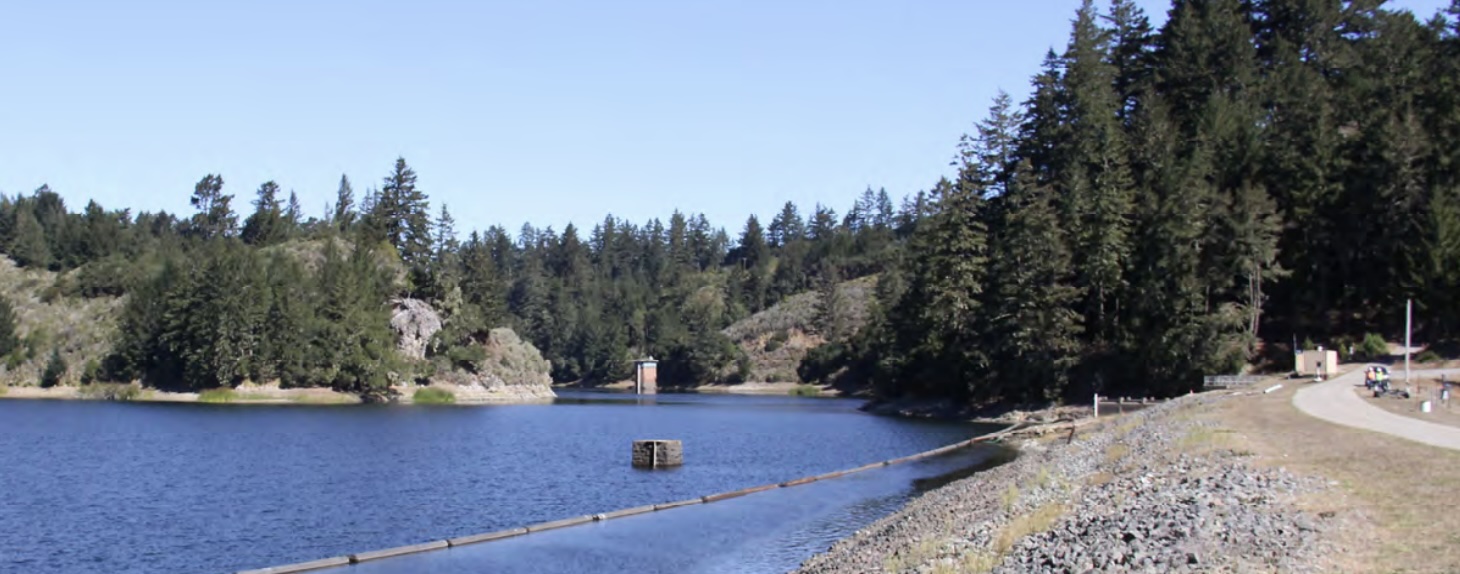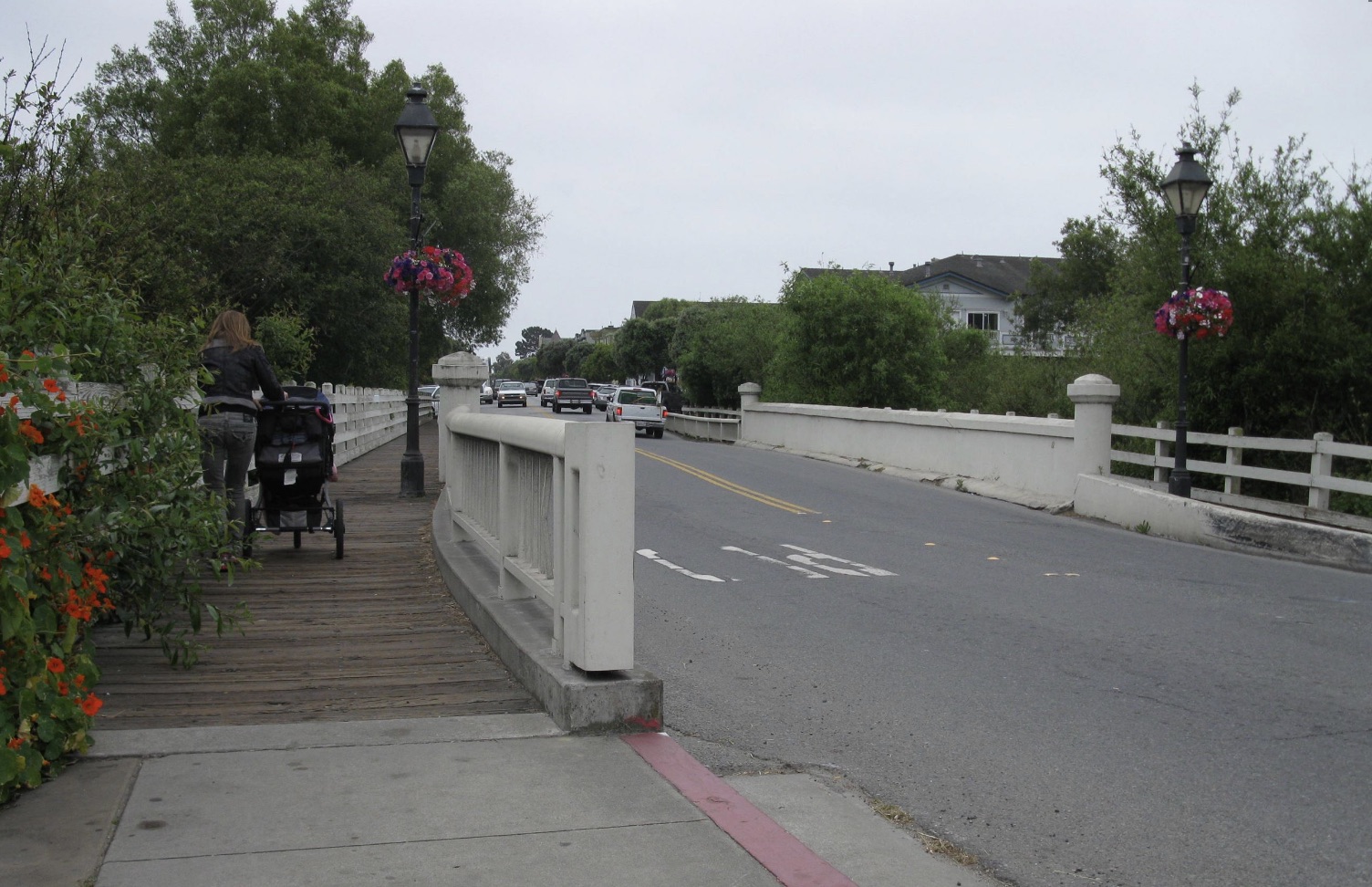|
Getting your Trinity Audio player ready...
|
OWN VOICE ARTICLE by Gregg Dieguez
“We can evade reality, but we cannot evade the consequences of evading reality.”*
Perhaps it shouldn’t take the Coronavirus to make us think about the sustainability of our civilization and our species, but people are slow to consider that there are limits to our population expansion, and that there are consequences for overshooting those limits. And those consequences exist right here in San Mateo County, and especially on the ecologically vulnerable Mid-Coast.
First, some concepts on Sustainability, then what it means to us locally.
Several authors have written about our unsustainable resource consumption, and limits to growth, the population bomb, etc., but my favorite was Bill Catton, in his 1980 book “Overshoot”, who explained in simple terms how a species could expand beyond the “Carrying Capacity” – or perpetually sustainable population limit of a habitat (in our case, planet Earth). The ecological concepts are “Drawdown” and “Takeover”. A species can grow beyond the normal sustainable “Carrying Capacity” of its habitat by:
Drawdown: which is consuming resources from the “savings bank” that nature has provided, in order to nourish some extra population in the short run. Humans employ this in over-hunting and over-fishing, and in our ‘Drawdown’ of 650 million year-old fossil fuels buried underground. These practices, especially the latter, have allowed us to reach a population of 7.8 billion, before the current pandemic.
Takeover: which is occupying habitat that a species formerly did not. Coastside, that means taking land currently occupied by birds and bees and plants and trees and building on it. This is often called “Real Estate Development”, but it really is habitat Takeover, and that term helps clarify the implications of allowing it.

Quick, what’s the population of the United States? 330 million? Wrong. It’s about 60 Billion Somalians. That calculation is based on the difference in our carbon footprint per person, compared to Somalia. Of course China is worse, but even ours is a population worth controlling, one for which we are responsible. What we need more of is less people. So, globally, and nationally, we have a sustainability problem. As in, we cannot sustain that population.
So, have we here in San Mateo County, or California, too many people to sustain our population forever? One hint came from an interview with the GM of a major water district who told me “the state’s entire water system was designed for a hydrology that no longer exists”. We built a system to move water, and to prevent floods, but without much storage. And we didn’t need much water storage when we had the “time release” snowpack in the Sierras to trickle out water well into summer, coupled with just enough storage until the fall rains came to refill our reservoirs. But now we don’t get rain until October or so, thus we require coverage for more months. But we’re losing the snowpack. And then we have drought years.
During the last drought Montara’s water system had to increasingly rely on the Alta Vista aquifer – and it was smart planning that they found it – to the point that the water being used was over 3,000 years old. Does that sound like near the bottom of the barrel? What if the drought had been longer than 4 years? The longest droughts in California history were over 200 years, and there is pre-human evidence that droughts here lasted 1,000 years. And entire civilizations collapsed and/or moved because of other droughts (e.g. Mayans, Southwestern Native Americans). And those droughts were caused by the old-fashioned celestial and terrestrial climate change which governed our planet for billions of years. Now, in addition to those natural climate forces, we are facing a Climate Crisis of unprecedented speed, amplified by a thickening blanket of greenhouse gases. So, it would be prudent to limit our population to water supplies available in the middle of a drought.
So, to again get local, what is the Carrying Capacity of San Mateo County, and who is managing it? As far as I can tell, no one knows the answer to either. I met the Director of Sustainability for the County (who recently left the job) as part of the Climate Ready Task Force he ran over the past year plus. His department evaluated preparedness, built a geo-mapping tool to identify heat stress risks, and offers a variety of services to assist in more ‘green’ or sustainable behavior. But when I asked him, in person, and via a couple of emails, who was: a) monitoring, and b) managing the sustainability of the following, I went months without an answer.
- Water supply
- Water quality – both drinking and effluent
- Garbage disposal capacity
- Heat
- Sea water level
- Traffic capacity
- Fiscal sustainability
… and of course that’s not a complete list of all the aspects of our society that need to be assessed to determine Carrying Capacity (health care capacity is a current hot topic, since it appears 1 in 6 Covid-19 patients requires hospitalization).
But just before he left, I received a carefully worded reply to my inquiry pointing to all the separate agencies whose responsibility is for issue X or Y or X that I had raised, and this summary “Thanks to the County’s Board of Supervisors, community partners, advocacy organizations and jurisdictions, we work together on achieving ambitious and critical goals that relate not only to preservation of the environment, but quality of life, improvement of the stability and usage of our infrastructure, and preparing thoughtfully for the continued population growth…”
Now there’s an old Chinese proverb which boils down to this: “If everyone’s in charge, no one’s in charge”. And I will take it upon myself (and whomever wants to help) in evaluating whether the other agencies he pointed to for managing all those dimensions of Sustainability are really doing that job – and whether ‘continued population growth’ should be part of our plan. But even without further research, there are some obvious concerns:
1. The last landfill in the county at Ox Mountain will be full by 2034, and then…. that’s it. No more garbage, or truck it somewhere else and pay them. Not sustainable. And most of “recycling” isn’t really being recycled…
2. Sea level is going to rise, and the timeframe and height is being debated, but 6 to 9 feet in this century is certainly possible. Yet we’re repairing roads that fall into the ocean due to an eroding coast, and building more residences in tsunami and earthquake zones. The County has conducted a vulnerability assessment, but is also in the process of approving more housing in areas served by the SAM plant which is highly vulnerable to impacts of sea level rise. Sounds like a waste of money and needless added risk.
3. The standard metric for assessing water system adequacy in a drought is a 50% reduction. How many water systems can provide normal water flows to their current populations in that situation? How much more will existing residents have to cut back if more population is added? We’ll assess specific districts in a future article.
One city manager I interviewed told me “The County is not the boss of me.” This points to a problem of our fragmented, siloed government. He felt his town could do as it pleased as long as the non-County agencies involved went along. No one IS in charge of monitoring and managing sustainability. The County Office of Sustainability did a fine job, in part, identifying some infrastructure at risk, and providing a variety of sustainability services (promoting green behavior). And the State also has a department which provides sustainability services, but they both are not MONITORING AND MANAGING Carrying Capacity along all the dimensions required. And if you don’t measure something, how the heck are you supposed to manage it?
Obviously, we can continue to build without monitoring and managing – because that’s what we’re doing. But we can’t avoid the consequences of doing so. And there will be nasty consequences. What is required are first some statutory changes, beginning with empowering the County Office Of Sustainability to monitor EVERYTHING relevant. They don’t have to measure everything themselves, they can just take the measurements provided by the panoply of governmental agencies, and aggregate, assess, and report on the trends. They probably also need some audit authority, to make sure those measurements are accurate. But starting with measuring the determinants of our carrying capacity should lead to the second step: Forecasting. And those forecasts should quickly flag capacity problems and lead to the third step: Planning & Managing. And taking that last step will involve statutory changes, to empower the County to “be the boss” of anyone being unsustainable in their growth. And that Managing will require money, and adherence to the concept of fiscal sustainability, at which the County (as well as a LOT of other public entities nationwide) is failing miserably. As evidenced by the County’s $3.7 Billion unfunded pension liability (my numbers say $3 to 5 Billion, but hey, he’s a Stanford professor), and their lack of fiscal sustainability assessments on the development projects they approve, the County is derelict in this regard. But that’s another article. In the meantime, let’s fully assess our Carrying Capacity here, and statewide, before we do more stupid.
___________________________________
* paraphrase of both Sir Josiah Stamp and Ayn Rand
More InPerspective from Gregg Dieguez
InPerspective: Pacifica Puts Profits Over People @ Pedro Point Field posted 3/1/2020
InPerspective: How Development Will Undermine Your Water, Sewer and Fire Security
InPerspective: Insights, Infrastructure, and In General Topics on Sustainability by Gregg Dieguez
InPerspective Editorial ~ Cypress Point (MidPen) Craziness
InPerspective: The Dirty Truth About Sewer Finances
InPerspective: The Cost of Connect The Coastside
InPerspective: Driving In Circles?






